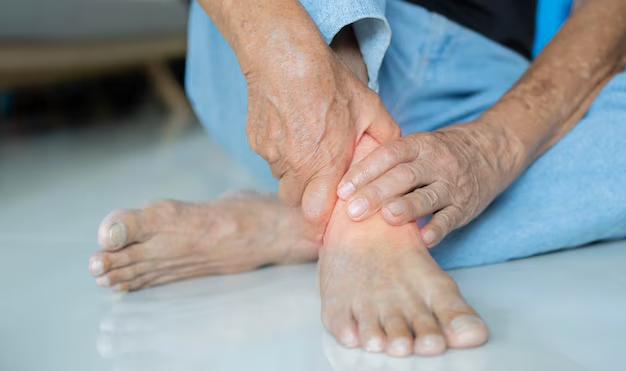Understanding Gouty Arthritis: Causes, Symptoms, and Management
If you've ever experienced a sudden, severe pain in your toe or foot, you may have encountered gouty arthritis without even knowing it. Often waking people in the middle of the night, gouty arthritis, or simply gout, can transform seemingly ordinary moments into bouts of intense discomfort. But what exactly is this condition, and why does it strike with such ferocity? Let's dig deep into the world of gouty arthritis, exploring its causes, symptoms, management strategies, and more.
What is Gouty Arthritis?
Gouty arthritis is a type of inflammatory arthritis characterized by sudden and severe pain, redness, and swelling in the joints. It is most commonly noticed in the big toe but can affect other joints, including ankles, knees, elbows, wrists, and fingers. The condition occurs due to the buildup of uric acid crystals in the joints, leading to inflammation and intense pain.
What Causes Gouty Arthritis?
The root cause of gouty arthritis is an excess of uric acid in the blood, a condition known as hyperuricemia. Uric acid is produced when the body breaks down purines, substances found naturally in the body and certain foods. While the kidneys usually excrete uric acid, those with gout have difficulty eliminating it, leading to increased levels that form sharp, needle-like crystals in the joints.
Common contributors to hyperuricemia include:
- Diet: High intake of purine-rich foods like red meats, seafood, and alcohol.
- Obesity: Increased body weight can lead to elevated uric acid levels.
- Genetics: Family history may play a role.
- Medical conditions: Certain health issues like kidney disease or metabolic syndrome.
- Medications: Some diuretics and immunosuppressants.
Recognizing the Symptoms of Gouty Arthritis
The symptoms of gouty arthritis can be unmistakable. Key indicators include:
- Intense joint pain: Primarily at night and often starting in the big toe.
- Swelling and redness: Joints become warm, tender, and swollen.
- Decreased mobility: Difficulty moving the affected joint.
An attack may last from a few days to a week or longer, with prolonged or untreated cases leading to chronic gout, causing joint damage and deformities over time.
How is Gout Diagnosed?
Diagnosing gout often involves a combination of medical history review, physical exams, and tests. Some commonly used methods are:
- Joint fluid test: Extracting fluid from an affected joint to identify uric acid crystals.
- Blood test: Measuring the level of uric acid in the blood.
- Imaging tests: X-rays or ultrasounds to examine joint structures.
Managing Gouty Arthritis
While there's no cure for gout, it is indeed manageable with appropriate strategies, largely focusing on minimizing pain and preventing future attacks.
Lifestyle and Dietary Adjustments
A major component of managing gout involves altering dietary habits and lifestyle:
- Follow a low-purine diet: Limit intake of red meat, organ meats, and certain seafood.
- Stay hydrated: Plenty of water helps flush uric acid from the body.
- Maintain a healthy weight: Weight loss can significantly reduce uric acid levels.
- Limit alcohol consumption: Especially beer, which is high in purines.
Medical Treatments
Treatment plans often involve medications that target the immediate pain and swelling, as well as those that aim to reduce uric acid levels:
- NSAIDs (Non-Steroidal Anti-Inflammatory Drugs) help reduce pain and inflammation.
- Colchicine: Another effective option for reducing the severity of gout attacks.
- Corticosteroids: May be prescribed for their anti-inflammatory effects.
- Urate-lowering drugs: Such as allopurinol, which reduces uric acid production.
Preventive Care
Prevention strategies are crucial and involve a mix of lifestyle modifications and adherence to prescribed medications. Regular check-ups and ongoing communication with healthcare providers ensure that individuals remain on the best path for managing their unique situation.
Exploring Related Conditions
Understanding gout can also involve looking at related conditions that may present similar symptoms or occur in conjunction:
- Psuedogout: Similar in presentation but caused by calcium pyrophosphate crystals.
- Rheumatoid Arthritis: An autoimmune disorder more generalized than gouty arthritis.
- Osteoarthritis: Although not inflammatory, it can sometimes be confused with gout during diagnosis.
Tips for Living with Gouty Arthritis
Here’s a quick reference to keep in mind if you’re living with or suspect you may have gouty arthritis:
- 💧 Hydrate Often: Water assists in flushing uric acid.
- 🍽️ Modify Diet: Avoid high-purine foods to minimize attacks.
- 🏃 Stay Active: Regular exercise promotes general joint health.
- 📞 Consult Healthcare Providers: Regular follow-ups optimize treatment plans.
| Tip | Action |
|---|---|
| 💧 Stay Hydrated | Drink plenty of water to help flush out excess uric acid. |
| 🍽️ Diet Adjustments | Avoid foods high in purines to prevent flare-ups. |
| 🏃♂️ Exercise Regularly | Maintain a healthy weight and improve joint health. |
| 📞 Regular Check-ups | Consistent monitoring and adjustments with health professionals. |
Concluding Insights
Living with gouty arthritis requires a dynamic balance of lifestyle modifications, dietary tweaks, and medical interventions. While the condition can assert itself without warning, understanding its intricacies empowers those affected to take control, reduce flare-ups, and optimize their quality of life. Each person's journey with gout is unique, requiring personalized management strategies that consider individual triggers and responses.
Remember, knowledge about gouty arthritis not only clarifies misconceptions but also enhances your ability to manage, adapt, and live comfortably with this condition. Whether it’s through diet, medication, or lifestyle adjustments, effective management is both possible and within reach.

Related Topics
- a Septic Arthritis
- Are Bananas Bad For Arthritis
- Are Tomatoes Bad For Arthritis
- Can An Inflamed Nerve Cause Arthritis
- Can An Inflamed Nerve Cause Arthritis In Dogs
- Can An x Ray Show Arthritis
- Can Arthritis Be Cured
- Can Arthritis Be Reversed
- Can Arthritis Become Septic After Infection From Injection
- Can Arthritis Cause Numbness